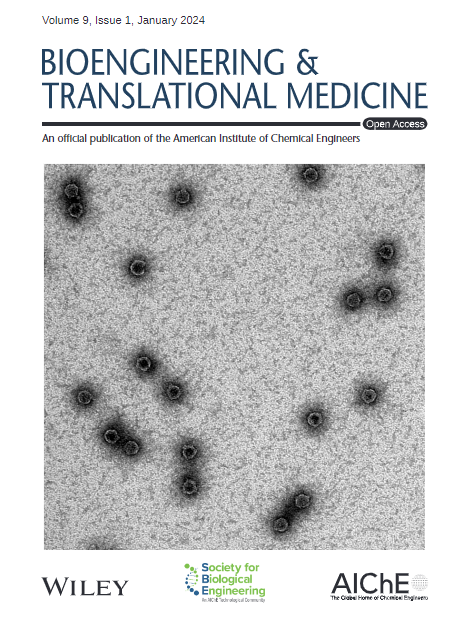通过基于NaOH的人神经组织脱细胞增强周围神经再生
IF 5.7
2区 医学
Q1 ENGINEERING, BIOMEDICAL
引用次数: 0
摘要
周围神经容易受到创伤、压力和手术损伤,使再生过程复杂化。虽然自体移植物仍然是恢复的金标准,但组织可用性和供体部位发病率等限制导致了同种异体移植物的探索。然而,在制备同种异体移植物时,传统的基于洗涤剂的脱细胞方法通常会导致残留毒性和对细胞外基质(ECM)的损伤。为了应对这些挑战,我们提出了一种基于氢氧化钠(NaOH)的脱细胞技术,以最大限度地减少有害残留物。我们的研究结果表明,这种方法有效地去除炎症物质,同时保留ECM成分和结构,并显着减少脂质和洗涤剂残留。体外研究证实,以NaOH为基础的脱细胞技术处理的人类神经具有低细胞毒性,并支持提高细胞活力和增殖。通过兔坐骨神经缺损模型,我们进一步比较了NaOH基脱细胞人神经与自体移植物的性能。NaOH基脱细胞神经的功能恢复与自体移植物相当。我们的研究结果表明结构再生通过神经丝和层粘连蛋白的表达,表明恢复水平类似于自体移植物。这项研究强调,通过NaOH - based方案进行脱细胞人神经移植物可以促进神经再生,与自体移植物相当,这可以为周围神经缺损的治疗和重建提供安全有效的选择。本文章由计算机程序翻译,如有差异,请以英文原文为准。
Enhancing peripheral nerve regeneration through NaOH‐based decellularization of human nerve tissue
Peripheral nerves are vulnerable to trauma, pressure, and surgical injuries, complicating the regeneration process. While the autograft remains the gold standard for recovery, limitations such as tissue availability and donor site morbidities have led to the exploration of the allografts. However, conventional detergent‐based decellularization methods in preparing allografts often cause residual toxicity and damage to the extracellular matrix (ECM). To address such challenges, we propose a sodium hydroxide (NaOH)‐based decellularization technique that minimizes harmful residues. Our findings demonstrate that this method effectively removes inflammatory materials while preserving the ECM components and structures, and significantly reduces lipid and detergent residues. In vitro studies confirmed that the human nerves processed with the NaOH‐based decellularization technique show low cytotoxicity and support elevated cell viability and proliferation. We further compared the performance of NaOH‐based decellularized human nerves with that of autografts through an in vivo rabbit sciatic nerve defect model. NaOH‐based decellularized nerves showed functional recovery comparable to autografts. Our findings demonstrate structural regeneration through neurofilament and laminin expression, indicating recovery levels similar to those of autografts. This study highlights that decellularized human nerve grafts through the NaOH‐based protocol can promote nerve regeneration comparable to autografts, which can offer a safe and effective option for the treatment and reconstruction of peripheral nerve defects.
求助全文
通过发布文献求助,成功后即可免费获取论文全文。
去求助
来源期刊

Bioengineering & Translational Medicine
Pharmacology, Toxicology and Pharmaceutics-Pharmaceutical Science
CiteScore
8.40
自引率
4.10%
发文量
150
审稿时长
12 weeks
期刊介绍:
Bioengineering & Translational Medicine, an official, peer-reviewed online open-access journal of the American Institute of Chemical Engineers (AIChE) and the Society for Biological Engineering (SBE), focuses on how chemical and biological engineering approaches drive innovative technologies and solutions that impact clinical practice and commercial healthcare products.
 求助内容:
求助内容: 应助结果提醒方式:
应助结果提醒方式:


